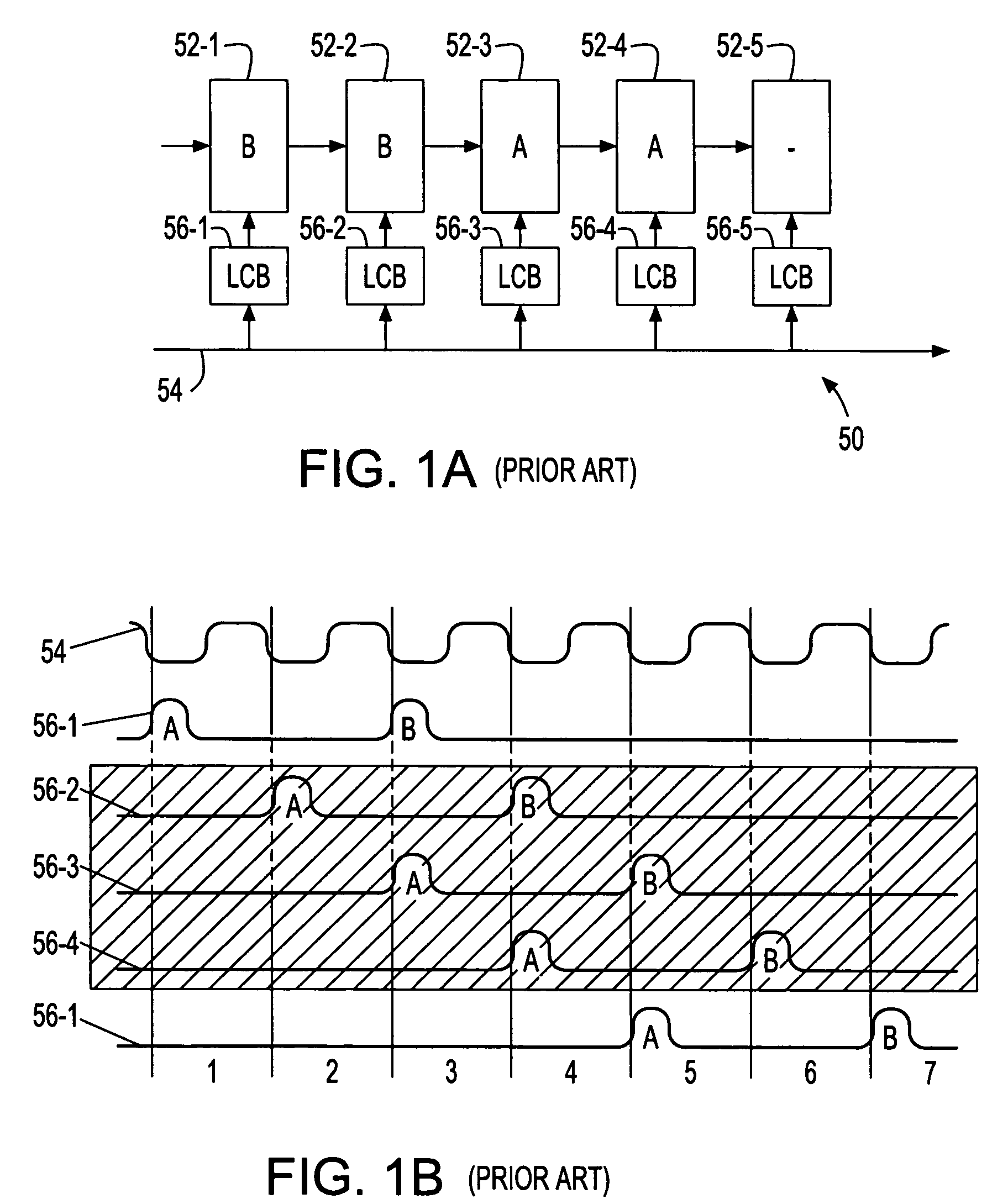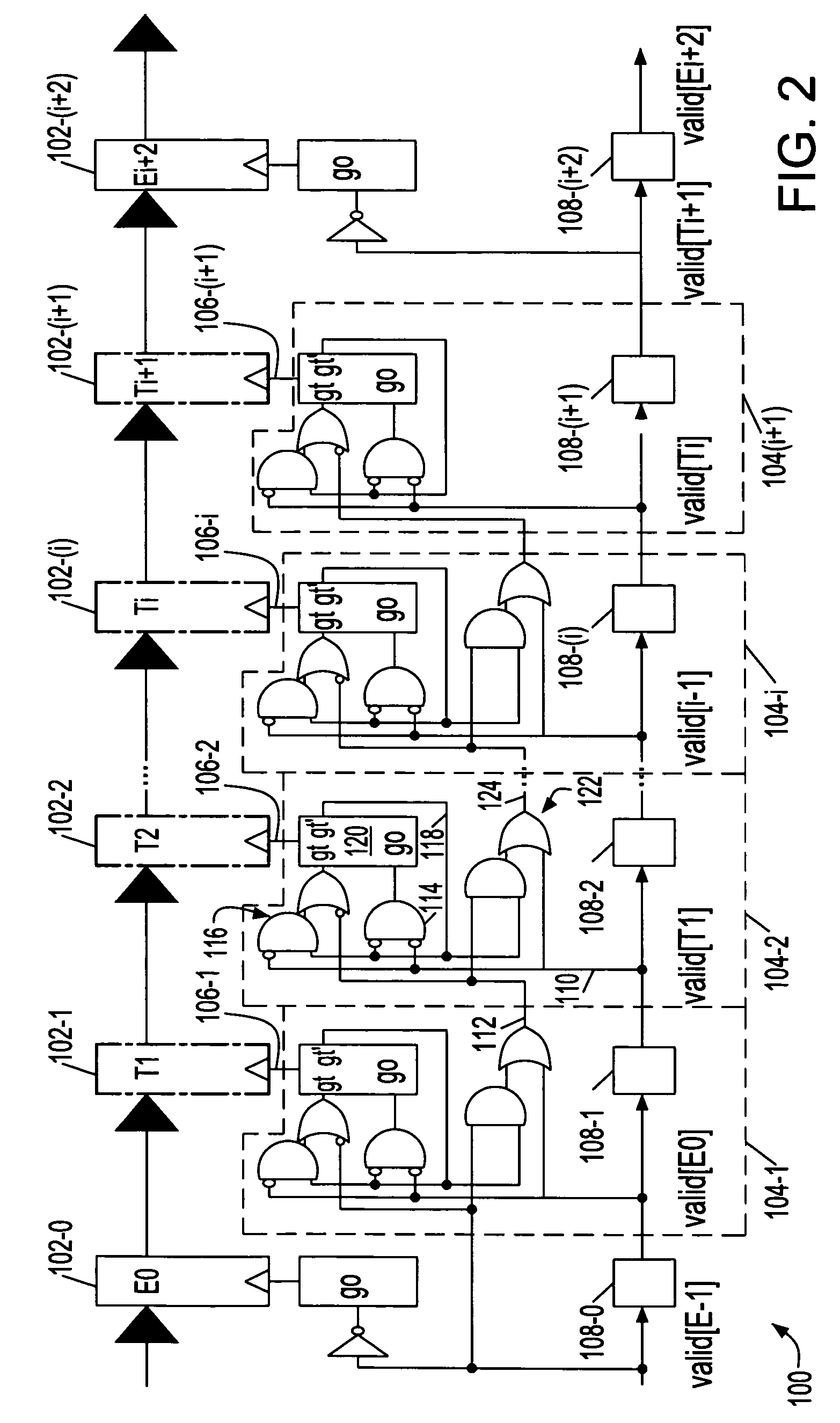Synchronous pipeline with normally transparent pipeline stages
a pipeline stage and pipeline technology, applied in the direction of generating/distributing signals, liquid/fluent solid measurement, instruments, etc., can solve the problems of chip power consumption, chip and system level cooling and packaging costs have increased, etc., to minimize synchronous design power and increase clock gating flexibility. , the effect of reducing pipeline operating frequency
- Summary
- Abstract
- Description
- Claims
- Application Information
AI Technical Summary
Benefits of technology
Problems solved by technology
Method used
Image
Examples
Embodiment Construction
[0025]Turning now to the drawings and, more particularly, FIGS. 1A–B show data propagating through an example of a typical prior art N by M pipeline register cross section 50 with a corresponding timing diagram. In this example N is five pipeline stages 52-1, 52-2, 52-3, 52-4, 52-5 that are normally opaque by default and, M may be any register width suitable for the particular application. A global clock 54 provides a timing edge from which local clocks 56-1, 56-2, 56-3, 56-4, 56-5 are generated for each pipeline stage 52-1, 52-2, 52-3, 52-4, 52-5. Each stage 52-1, 52-2, 52-3, 52-4, 52-5 is clocked (pulsed transparent) to allow local data items to propagate through and be latched in the (subsequently opaque) stage 52-1, 52-2, 52-3, 52-4, 52-5. Data items propagate through the pipeline 50 clocked by a local clock pulse 56-1, 56-2, 56-3, 56-4, 56-5 that temporarily pulses the respective stage 52-1, 52-2, 52-3, 52-4, 52-5 transparent. After sufficient time for the data item to pass thr...
PUM
 Login to View More
Login to View More Abstract
Description
Claims
Application Information
 Login to View More
Login to View More - R&D
- Intellectual Property
- Life Sciences
- Materials
- Tech Scout
- Unparalleled Data Quality
- Higher Quality Content
- 60% Fewer Hallucinations
Browse by: Latest US Patents, China's latest patents, Technical Efficacy Thesaurus, Application Domain, Technology Topic, Popular Technical Reports.
© 2025 PatSnap. All rights reserved.Legal|Privacy policy|Modern Slavery Act Transparency Statement|Sitemap|About US| Contact US: help@patsnap.com



